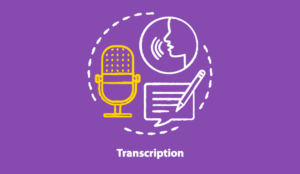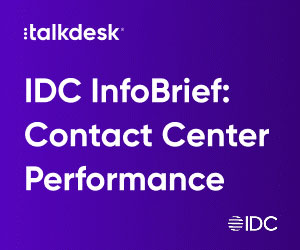Natalia Abad of Genesys discusses how contact centre voice transcription works, before sharing a number of best practices.
Voice transcription forms the basis for analysing interactions. It allows managers to review the content of calls, enables quality managers to assess the delivery of service and lets legal departments track compliance. It can be a game changer for organizations. So, it’s critical to know the best practices for getting the most out of voice transcription.
Companies face hundreds of interactions each day. And those interactions hold the value of the customer–company relationship. Analysing these interactions provides the necessary knowledge about how the market is changing and how companies engage with customers.
An integrated system that lets you lay the foundation for good, structured interaction analysis is fundamental to improving service and compliance. However, managers and supervisors typically struggle to do this while juggling different systems.
Also, it’s difficult to analyse multiple interactions to identify trends and opportunities for improvement. This is where quality managers can take advantage of workforce engagement management (WEM) capabilities, speech analytics and voice transcription.
Defining Speech Analytics and Voice Transcription
Speech analytics is a set of features that provide an automated evaluation of speech interactions on which the contact centre runs daily.
Voice transcription is the process of converting a conversation into a textual representation that shows, in writing, the words that are spoken during the interaction. It converts the unstructured data into structured data to interpret the content of the conversations.
By combining the features of speech analytics with voice transcription, you can extract the information that’s considered relevant or of greatest value to a business. And you can provide deep insights into conversations between customer and agent.
Understanding How Speech Analytics and Voice Transcription Work
Speech analytics and voice transcription are a set of capabilities within the discipline of quality assurance (QA) and compliance. They give managers the information they need about agent performance, quality of interactions and customer satisfaction.
Additionally, they help contact centres reduce legal risks and improve compliance. By analysing call recording and tagged transcripts, contact centres build a record of their interactions that can be used for training, trend analysis, identifying improvement opportunities and legal defence.
With these quality management capabilities, contact centres are also giving back time to quality managers so they can execute more strategic and meaningful tasks.
This means that managers can quickly and easily filter out keywords, phrases, topics and emotions; and it decreases the time spent scrutinizing interactions to find those that are relevant. Finally, it promptly alerts managers to take corrective action if a problem occurs.
5 Tips for Getting the Most out of Voice Transcription
It’s important to establish some best practices to maximize the benefits that speech analytics and voice transcription provide.
1. Set Goals and Determine Key Performance Indicators
Whether it’s measuring performance, increasing revenue, gathering insights to improve service levels or understanding customer preferences, stating the purpose — why and how you leverage these capabilities — allows you to map the path to a proper adoption. And, ultimately, that maximizes your investment.
By setting objectives in advance, it’s easier to identify KPIs. Speech analytics and voice transcription allow you to understand the health of the contact centre and how it’s performing. And then you can determine which interactions to review. This is a starting point — and one way to establish KPIs such as first-call resolution, service response times, customer satisfaction or wait times.
2. Select the Right Staff
The best technology and systems only work with the right people in place. When employees properly respond to the system, it often takes fewer people to achieve desired goals.
Take the time to select the right employees to achieve this task and leverage proper training. It’s necessary to explain the benefits of a new tool that you plan to implement; state incentives and the value it will bring to employees. And be sure to point out that this change not only involves agents, it also involves quality managers, evaluators, supervisors and IT staff.
Make sure everyone involved receives training and understands the value of the new tool.
3. Configure Software
Once you’ve defined goals and KPIs, they must be configured to enable automation for performance monitoring, categorization, topic spotting, keyword identification, and tagging and scoring.
All these factors contribute to the identification and search for interactions your business wants to track. And be sure to perform a subsequent follow-up.
4. Minimize Risk
Plan for compliance management. Creating a repository and keeping auditable resources handy is a must. It’s the best way to mitigate risk — and it should be unique to your organization and each interaction.
Execute an assessment of the interactions and what needs to be implemented and integrated. Consider the audio content as well as the transcription. Acknowledge the benefits it offers, pinpoint opportunities for improvement and prepare for potential complaints.
5. Integrate Pause Recording
Identify how quality assurance and compliance tools allow for manual and automatic pause recording. This is important for compliance reasons; you need to be sure you’re not recording or storing private information.
Leverage artificial intelligence (AI) to support your agents’ skills and training so they can successfully execute their daily tasks. Automatic pause recording is an effective strategy.
If it’s configured properly, using predictive algorithms that listen to conversations, it pauses the recording when triggered by a set of words and phrases before certain private details are shared. It then restarts the recording once the private data has been stated.
With manual pause recording, agents can ensure that no private information is recorded.
This compliance requirement can be visualized in the voice transcription segment where the content that can’t be stored or recorded is rejected. AI and automatic pause recording must work hand in hand.
Driving Employee Performance
Voice transcription has immense benefits for the contact centre; it allows companies to more easily access insights into customer and agent needs. By using data gleaned through a transcription, companies can drive customer services and improve core performance. It also allows you to identify the following.
- Customer satisfaction: Track recurring themes, trends and hot topics.
- Competitive intelligence: Highlight when customers ask for products or services from the competition.
- Identify under-performing agents: Quickly view improvement areas and develop a plan for training agents by showing them desired processes. This enables you to create a step-by-step process using the best performances as an example and share it with the entire company.
Author: Guest Author
Published On: 11th Dec 2020 - Last modified: 8th Aug 2022
Read more about - Archived Content, Genesys








